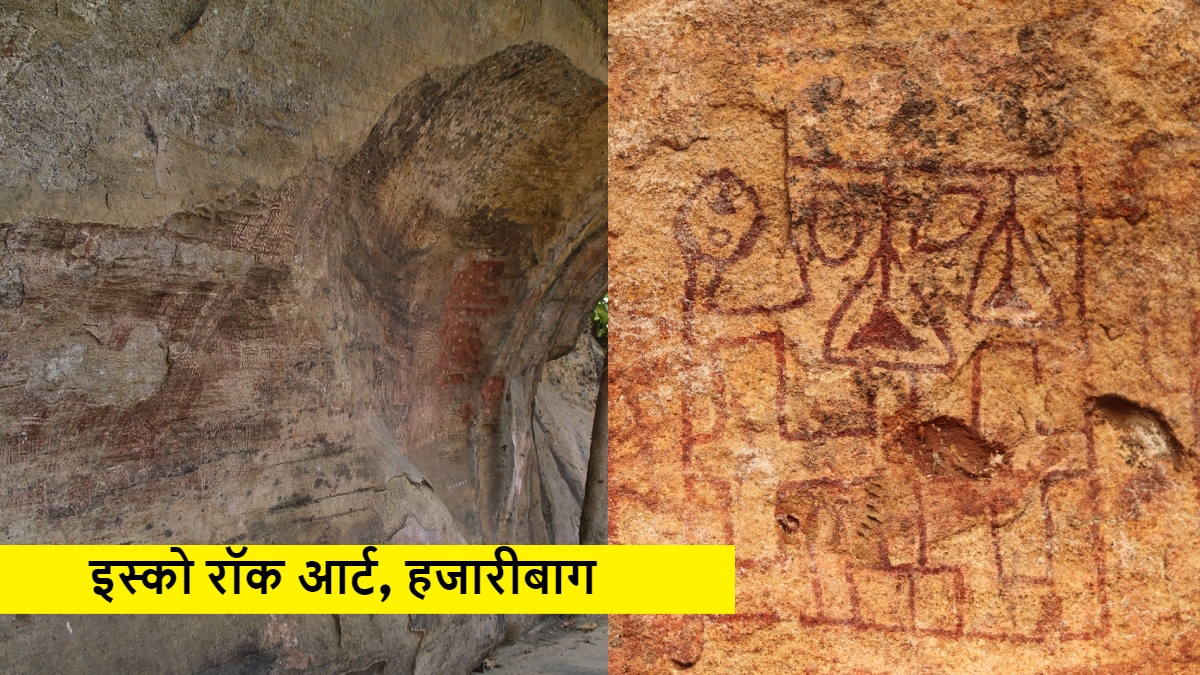
Today let us tell you about a site of archaeological importance which is considered to be contemporary of Nagvanshi kings. The 2 to 5 thousand BC old Isko rock art site in Isko village of Hazaribagh will become a national heritage by the end of this year. ASI i.e. Archaeological Survey of India had sent a proposal to give this heritage the status of national heritage in 2022.
In the year 2019, ASI Ranchi Circle started the process of evaluating this site to add it to the list of protected ancient sites of ASI. After that, its proposal was sent to the Center in the year 2022.
Isko rock art is older than Dhobi Math
Talked to Ranchi Circle Superintendent Archaeologist Dr. Rajendra Dehuri regarding the Isko Rock Art Site of Hazaribagh. While talking, Dr. Dehuri told that the proposal for Isko Rock Art Site was made around 2022. This monument of Hazaribagh is older than Dhobi Math. For your information, let us tell you that Dhobi Math is 17th century old.
Whoever our ancestors were, who lived in the cave, used to make paintings in it. In such a situation, we can look at this rock art site from a completely artistic point of view.
Ranchi Circle Superintendent Archaeologist Dr. Rajendra Dehuri
Apart from this, this rock art site reveals the religious sentiments and social concepts of the ancient man. More research is going on regarding this, which will reveal a lot about the former man. Let us tell you that the entire process will be completed this year itself. This will reveal the broader view of the Nagvanshis.
Isko Rock Art is famous for ancient rock art.
Isko village is famous for its ancient rock art. It is located in the Hazaribagh district in Jharkhand, and is an important site for prehistoric paintings that date back to different eras, some of which are believed to be 10,000 years old. Rock art provides valuable insights into the life, culture and beliefs of ancient civilizations.
This cave was discovered in 1991
This cave was discovered in 1991. Hazaribagh resident and renowned historian Padmashree Bulu Imam got information about these rock paintings. Its resident Kheta Munda informed Bulu Imam that there was a painting on a 1000 feet long wall. Historians often come here and study.
Many types of stories are heard regarding this. Locals here say that Badam Raja had come here with the queen after marriage to spend time. He created this shape which was called Kohbar. And gradually this artwork became famous and came out of the cave and found a place in the walls of the village.
But now this artwork is on the verge of extinction due to which it needs to be preserved. There is a need to make people aware about this art.
Two new sites identified after separation of Jharkhand state from Bihar
At present, there are a total of 13 nationally protected monuments/archaeological sites under Ranchi division, whose care and maintenance is being done as per the provisions of the Ancient Monuments and Archaeological Sites Act 1958 and Rules 1959. There are 13 monuments in Jharkhand which are being preserved by ASI.
Of these, there are two monuments/sites which have been identified after separation from Bihar. The Temple of Haradih was identified by ASI in July 2014, while the Place and Temple Complex at Navratnagarh was identified in September 2019.
These are the till now preserved archaeological sites of Jharkhand
- Asura archaeological site Hansa
- Haradih Temple Group Haradih
- Asur archaeological site Kathar Toli
- Ancient Shiva Temple Khekaparata
- Asur Archaeological Site Khunti Tola
- Asura archaeological site Kunjala
- Asur Archaeological Site Saridkel
- Possible underground chamber and tunnel cum Baradari Araji Mokhimpur
- Jama Masjid Hadaf
- Remains of ancient lakes and temples, Benisagar
- Remains of ancient lakes and temples, Benisagar
- Koolugadha and Bansput ancient mounds Itagarh
- Palace and Temple Complex Navratnagarh (Doisagarh)
Also Read, Exclusive: Gumla’s Dhobi Math, built 350 years ago, will now become a national heritage, ASI sent proposal to the Centre.
